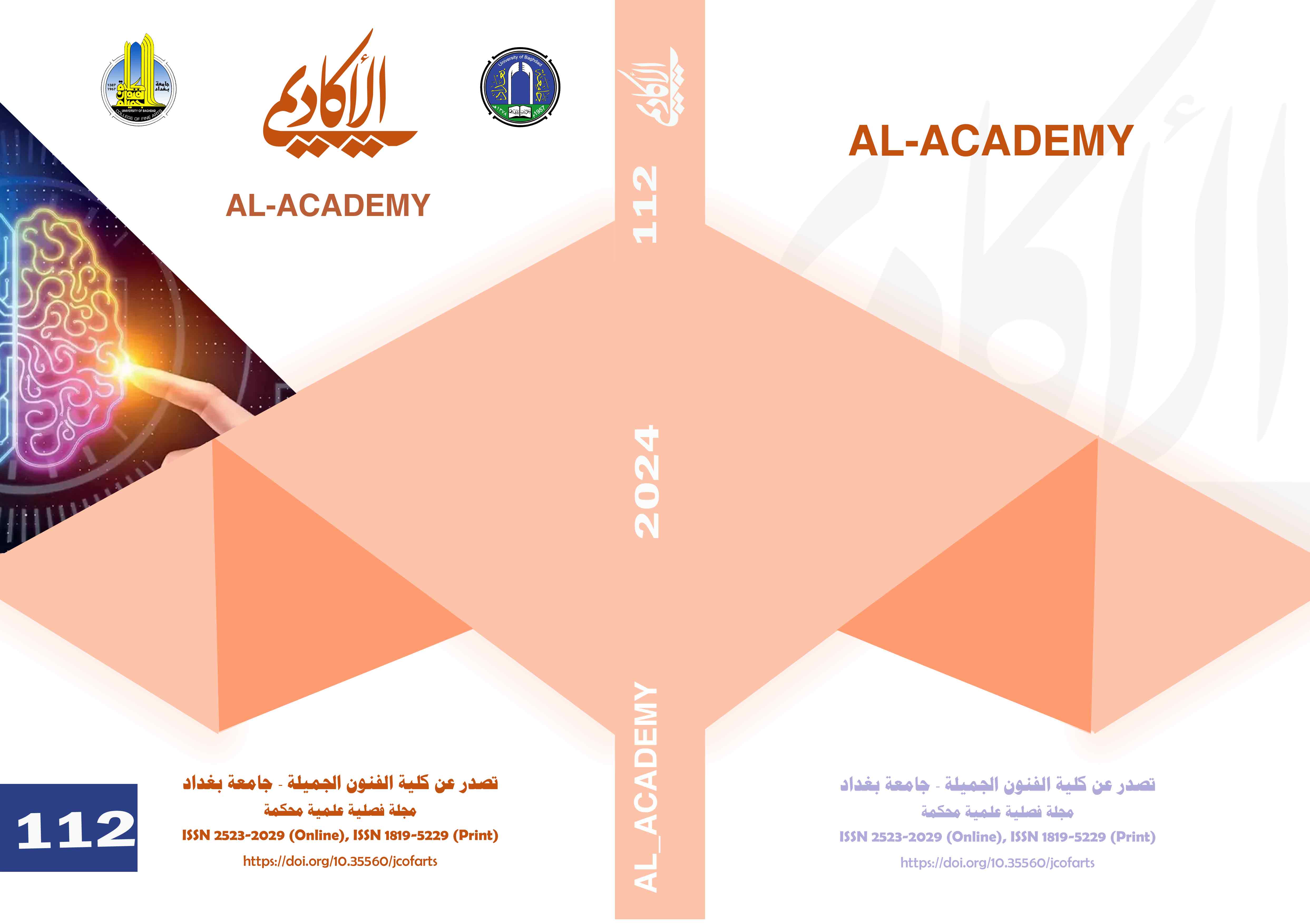Design objectives of the mask in children's theater performances
DOI:
https://doi.org/10.35560/jcofarts1157Keywords:
mask design goalsAbstract
The art of theater is known as one of the dramatic arts that is based on presenting performances in a live and direct manner, so that these performances are preceded by careful planning and organization to create a coherent and important feeling for theatrical work and drama .
Technology has a major role in the development of theatrical art, in other words, the development of all the articulations of the theater from a technical point of view, both at the level of theatrical performance and the techniques involved, including the mask technique
.
The mask is the garment that covers the face, and it has many other uses such as disguise and others, and it is one of the arts that many simple peoples have known since ancient times, such as the Eskimos and the Native Americans, despite the multiplicity of functions of the mask throughout history. It has been used for thousands of years as it obscures the reality of identity, but when we review all the worlds of masks, we find it more correct to say that its main function lies in being the barrier between the self and what is outside It .
The children's theater was and still is the most invested in mask of both half and full types for suspenseful, aesthetic and artistic purposes that are in line with the requirements of the presentation. Visual in children's theater performances) and in light of that, the tagged research (the illusionary mask and visual formation in children's theater performances) was divided into four chapters
The first chapter: The methodological framework includes the research problem centered around the following question: -(Identifying the design goals in the theatrical mask in children theatre performances) for the second chapter ,it included two sections
And the result were:
1-The font appeared in the evil characters transformed and formed by Ihamya and invited by the desiger imagination ,which achieved an effect in simulating the child ,and this is whate appeared in the sample (Gilgaesh who saw) so we find the font in the characters (the narrator- Enkidu- umm Gilgamesh)
2-The designers of theatrical performances relied on greating the general atmosphere through visual formation and employing it in a technical way to enrich the design effect with the movement of the actor ,including masks and accessories, in the image achieved by illution and its effectiveness and bringing the image of figure closer to the recipient and placing it within the anticipatoy act of the theatrical game.
References
Abd, A.-W. S. (1987). A place is studey in the evolution of the stage . Beirut : The Modren Arab office.
Abdel, A. F. (1974). Takween in fin Art. Cairo: Dar. Al- Nahda Al- arabiya.
Ali, T. (2010). principles of Architectural Design publishing and Distribution. Beirut /Lebanon: Dar Qabes for printing.
Behnam, shaawi Rawa. (1999). custume design for expressive plays (applied study). (p. t. editor, Ed.) Iraq /Baghdad: college of fine art.
Hartrnol, p. (1979). The coneise oxford campanion of the theatre. London: oxford university press.
Ibrahim, H. (1994). Dictionary of Dramatic and Dramatic term. Cairo: Dar.Al- shaab.
Iglentiri. (1992). An Introduction to Literary Theory :the second Hundred Book Series. (A. J. Ibrahim, Trans.) Baghdad: The House of General cultural Affairs.
Julian, H. (2000). Theory of theatrical show. un known place: (Hala) forpublishing and disribution.
Kifaya, S. A. (1993). Fashion design on the mannequin. Cairo: Dar Al-Fikr Al- Arabi.
Mamduh, K. (1968). the special methods of teaching art education for grades :the second ,third and forth of the teachers role. Dumuscus: Directorate of school books.
Nemat, A. I. (1975). Arts of the middle East and the Ancient World. Dar Al Maarif.
Sadoon, H. T. (2006). Cod and Coding in Theatrical performance. Naboo Research Journal(1).
Sahab, A. A. (2002). Aesthetic values in the design of texture and children fashion and their dialectical relationship. Baghdad: university of baghdadLcollage of fin ART.
Thabet, A.-B. M. (2001). formal transfomation in the designs of islamic interior spaces. (p. t. editor, Ed.) IraqK Baghdad: Baghdad university.
jiad asmaeil, sahib. (2023). Scenography and the effectiveness of meaning in the theatrical space. Al-Academy, (107), 235–256. https://doi.org/10.35560/jcofarts107/235-256
Mahmoud Attia, A. ., & Laith Ahmad, asil. (2022). Characteristics of costume design in children’s theater performances. Al-Academy, (106), 59–70. https://doi.org/10.35560/jcofarts106/59-70
saad latef, A., & Ajil Al-Assadi , muthad. (2022). Directing treatments to employ the place in the theatrical performance. Al-Academy, (106), 231–252. https://doi.org/10.35560/jcofarts106/231-252
Fadel Ismail, M. ., & Imran Mousa alomran, K. (2022). The functional diversity of the directorial vision in the political theater cinema as a model. Al-Academy, (106), 271–286. https://doi.org/10.35560/jcofarts106/271-286
Downloads
Published
Issue
Section
License
Copyright (c) 2024 Baraa Shakib Akram Al-Salihi

This work is licensed under a Creative Commons Attribution 4.0 International License.













